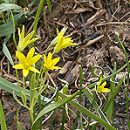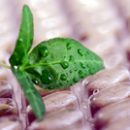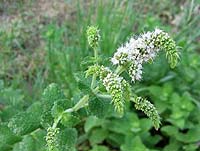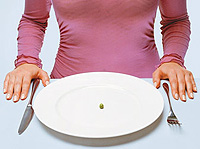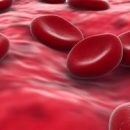In the autumn period, many are thinking about how to distinguish themselves from influenza and colds. How to help yourself, if all the same got sick? Echinacea for a long time helps people. How? Find out in our article!
Content
Echinacea - Beauty and Health
This beautiful plant can be grown in garden sites and as decorative, and as a medicinal. Echinacea decorates the garden at the end of the summer, when blooming perennials in the garden is not so much. Echinacea Purple - a perennial herbaceous plant from the Astrov family. The height of the stems is 60-100 cm, the rhizome is a multi-row, branched with numerous roots, deep penetrating into the soil. Roots and rhizomes very burning taste. Wireless leaves, roasting on long cutters and are collected by a rosette, stem-short-barrel.
Inflorescences and baskets up to 10-12 cm in diameter are located on the top of the stem and in the sinuses of the upper leaves. Regional tongue flowers in inflorescences light or dark purple, on a color between small tubular flowers are located dark-colored sharp and spiny bracts. Fruits - four-grated brown seeds 5-6 mm long.
History Echinacea
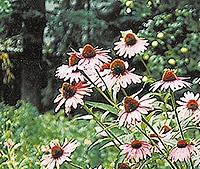 Motherland Echinacea Purple - North America, where she grows in prairies on raw rich soils in the southeastern states of the United States. As a spectacular decorative plant, Echinacea Purple has long been grown in many countries, in Russia it appeared in the gardens at the beginning of the XIX century.
Motherland Echinacea Purple - North America, where she grows in prairies on raw rich soils in the southeastern states of the United States. As a spectacular decorative plant, Echinacea Purple has long been grown in many countries, in Russia it appeared in the gardens at the beginning of the XIX century.
Plant This first described Karl Linney in 1753. called Rudbeckia purple and taken to the genus Rudbeckia. After forty years, another botany allocated genus Echinacea from the genus Rudbeckia.
Distinctive features of these births are as follows: Rudbeck Language flowers in baskets are yellow, orange, rarely red, bracts on a color soft, not spiky, and Echinacea flowers are almost always purple or crimson, bracts hard, spiny, borrowed-pointed. Therefore, the name «Echinacea» happened from the Greek word «Echos» - barbed.
North America Indians have long been used by Echinacea Purple and close to her kind of echinacea narrowing for the treatment of many diseases, and among many medicinal plants known to them, Echinacea was valued especially.
They have the roots of Echinacea have always been considered the best tool in the bite of poisonous snakes and when infecting blood, Echinacea treated ulcers, tumors, colds. In the twentieth century, many countries began to study the mechanism of action of Echinacea drugs to the human body, they were studying this plant and in our country.
It turned out that it possesses a very valuable property - the ability to increase the natural protective forces of the body and the faster to cope with the disease. It also possesses antallergic, antibacterial, antiviral and antimicotic action. As medicinal raw materials, both the above-ground part of the plant and root rhizomes are used.
For example, juice from fresh inflorescences accelerates healing wounds. Currently, there are many drugs in our pharmacies, which include Purple and Echinacea's echinacea. Echinacea Purple is valuable as a feed plant and how honey.
Grow a pharmacy on the garden
In the middle strip of Russia, Echinacea is growing well, but requires care and attention, as the plant is heat-loving. It must be grown in the sun and on rich in humus, well-drained, sufficiently moisturized and deeply treated soils. On the light sandy soils, Echinacea grows poorly. In the soil, it is desirable to add a small amount of lime. In the harsh and especially misunderstanding winter plants can freeze, and sometimes the plants of the first year of life will freeze in conventional winter, therefore, especially in cold places, it is better to hide them with a dry sheet.
Echinacea multiplies seeds and vegetatively (parts of the plant). When sowing in May to open ground, shoots appear in 2-3 weeks, sometimes later. By the end of the first year of life, the rosette of the leaves 15-20 cm tall is formed. They bloom at the 2nd year, blooming continues from the end of July - the beginning of August to September.
In the middle lane, the seeds are ripen only in those inflorescences that bloomed before others, and if September is warm. In our conditions, it is preferable to suck the seeds of Echinacea in the greenhouses in February - March, then plant seedlings in the ground. In this case, the plants can bloom in the year. Vegetatively echinacea breeds the fission of the root early in spring.
As a decorative plant, Echinacea can be landed with separate groups among the lawn, in combination with lower perennials, near the trees. You can use this plant for cutting, Echinacea's inflorescences are long in the water.
Echinacea and medicine
For medical purposes, the plants of any age starting from two years. The grass (the top of the stems with inflorescences) is harvested at the beginning of flowering, roots and rhizomes digging in autumn.
Infusion of grass
1 tablespoon of dry crushed raw materials pour 1 cup boiling water, heat on a water bath 10-15 min., insist until it cool, then strain. Take 1/3 cup 3 times a day.
Broth roots
1 tablespoon of dry crushed raw materials pour 300 ml of water, heated on a water bath for 30 minutes., insist before cooling, strain. Take 1-2 tablespoons 3-4 times a day before meals.
Fresh rhizomes with roots
Crushed raw materials pour 95% alcohol so that it only slightly covered it, insist 2 weeks, squeeze, strain. Take 25-30 drops 3 times a day half an hour before meals. Keep refrigerated.

